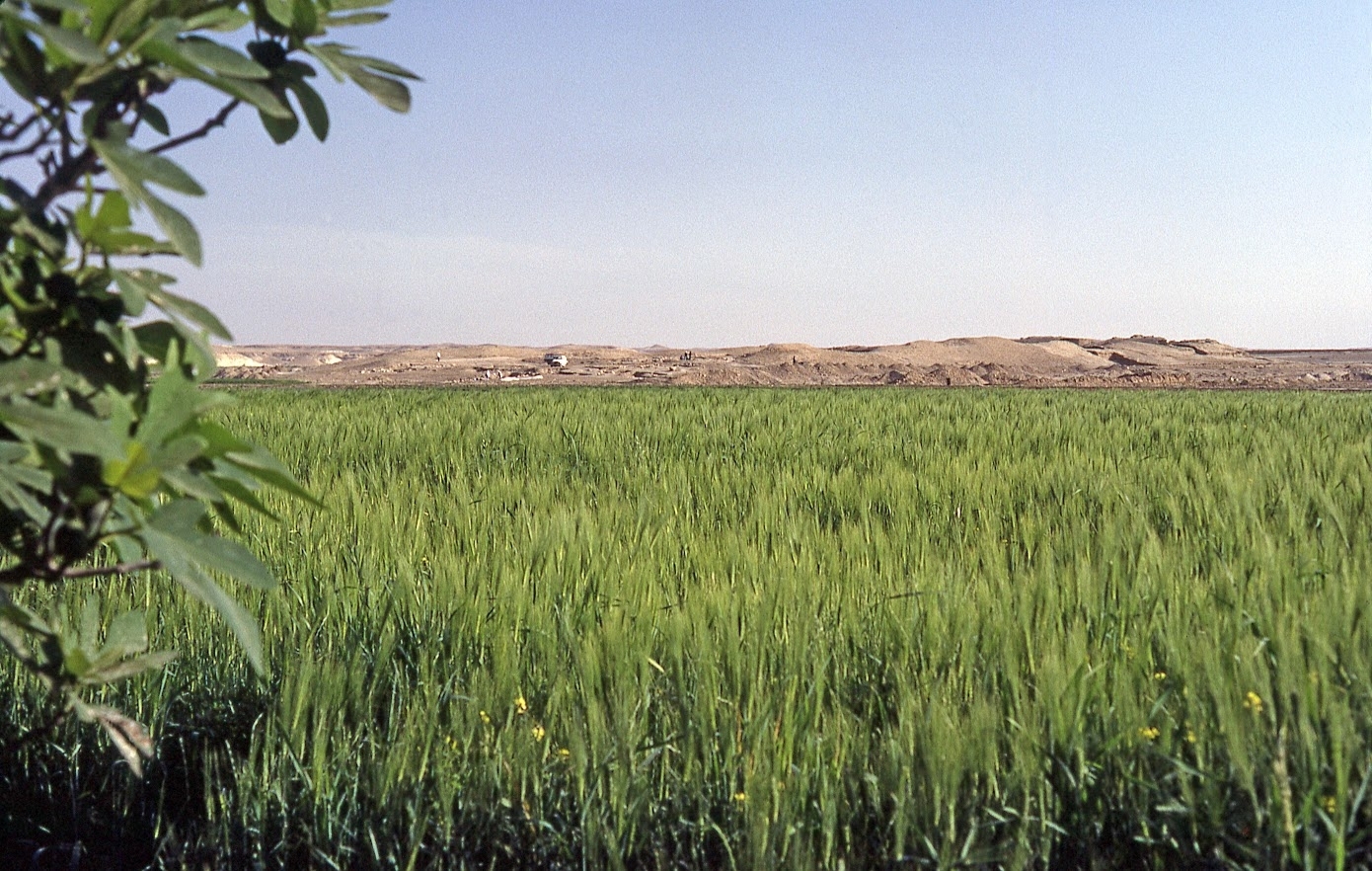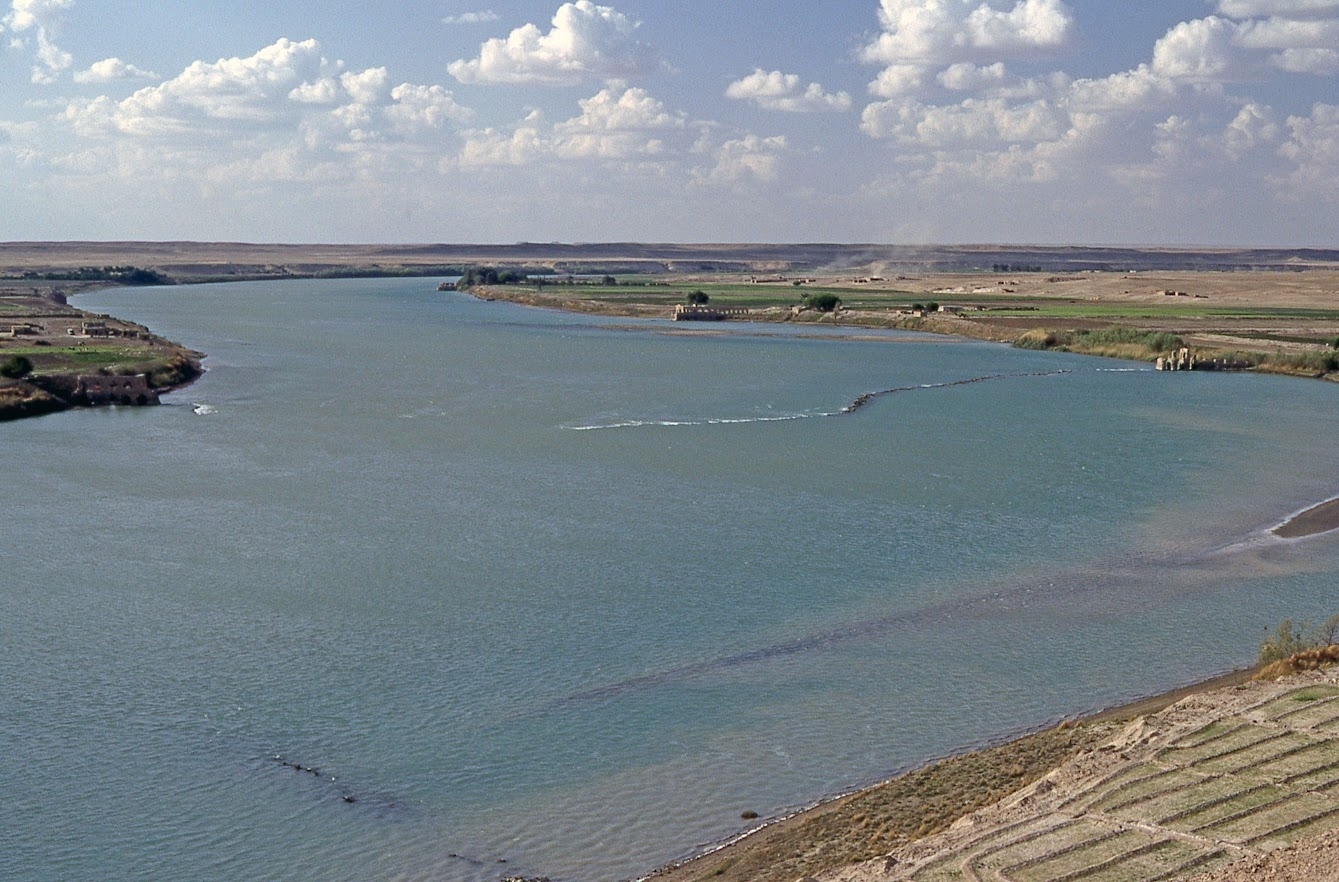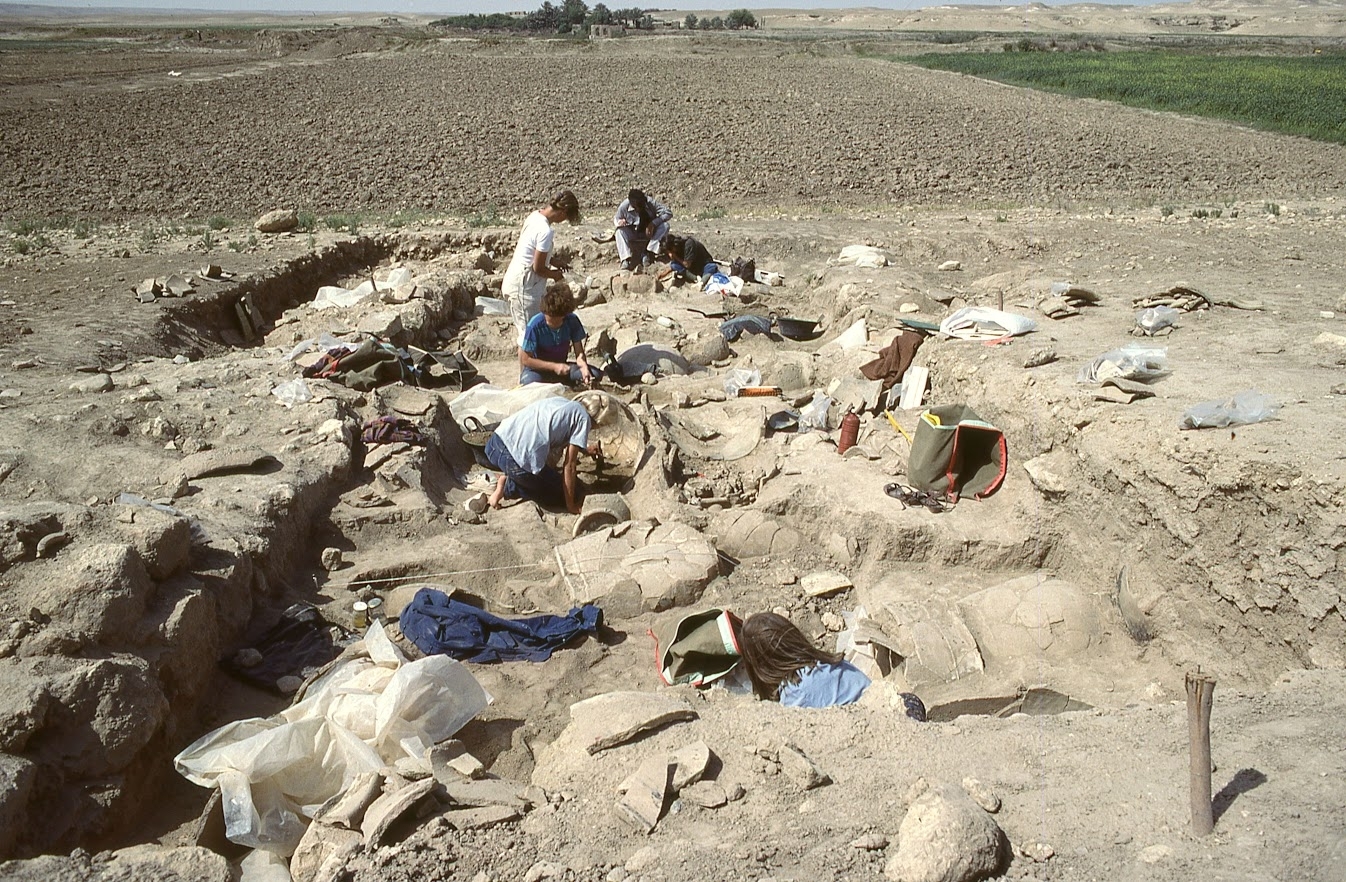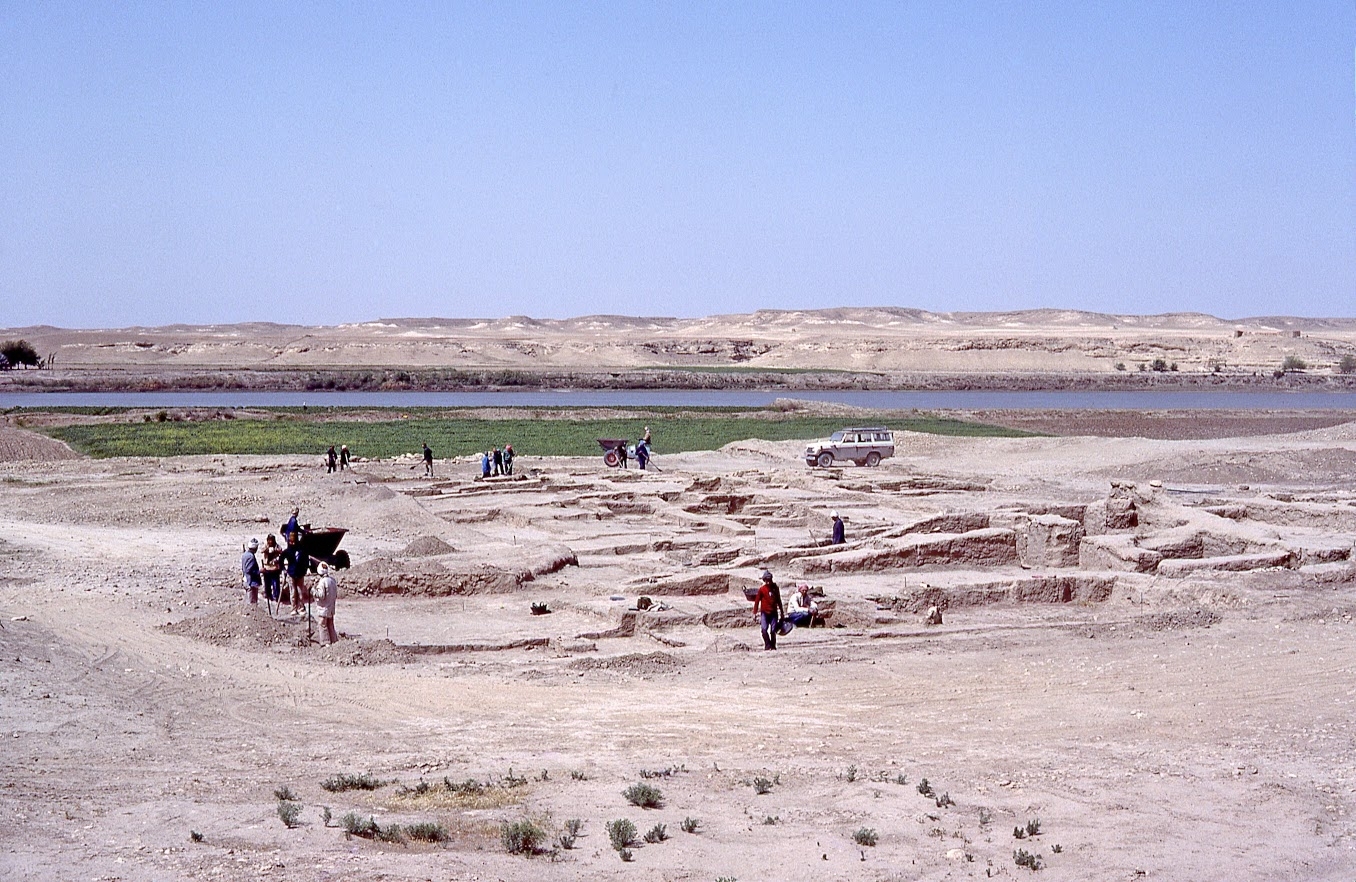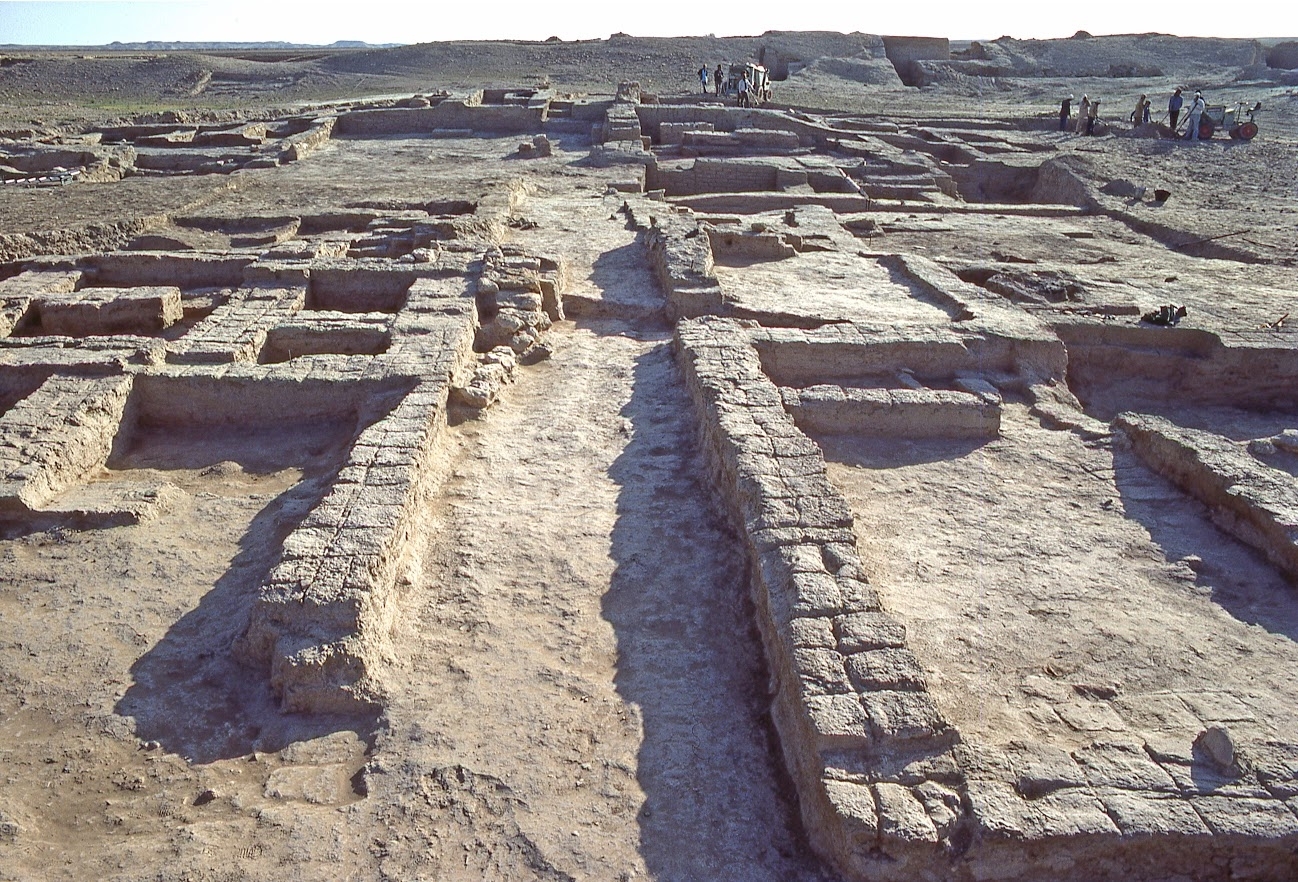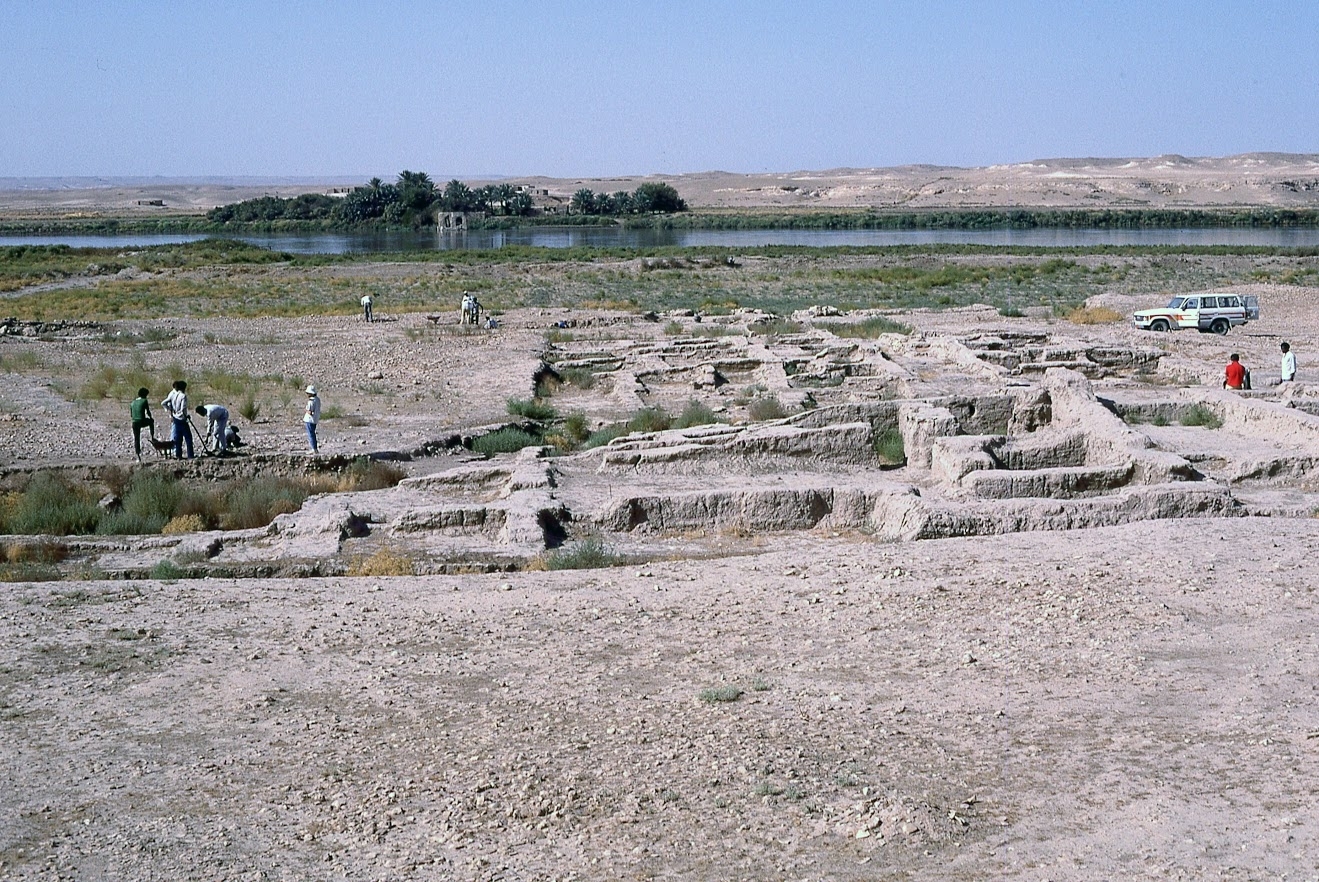Haradum
Haradum, a new fortified city on the banks of the Euphrates, was the subject of a preventive excavation (1981-1988) led by a French team supervised by Christine Kepinski. The material remains and cuneiform tablets discovered help reconstruct the daily lives of its inhabitants in the 18th century BCE.

The archaeological site of Haradum, in northwestern Iraq is remarkable for its perfectly orthonormal new-town urban planning. The joint discovery of archaeological remains and cuneiform texts revealed details about the daily lives of the people who lived in this city at the crossroads of several long-distant trade networks.
Plan of the city
Haradum was founded in the 19th century BCE by King Eshnunna. It is located in a border region at the crossroads between Babylonia and the West, on several caravan routes. Refounded during the reign of Hammurabi (1792-1750), shortly after he annexed the kingdom of Babylon, the city has a deliberately regular plan with a square 5-hectare enclosure with equal districts, crossed by narrow streets leading to houses. The city also had craftworking districts, warehouses and two temples. The local material culture revealed that Haradum was a cultural crossroads combining Babylonian and Western influences.
The daily lives of its inhabitants
Haradum had a little over 400 inhabitants, and private archives have revealed details about some of them. The textual records paint a vivid picture of people who were engaged in trade, contracted loans, managed their farmland, fulfilled their military duties, got entangled in legal cases and worried about bad omens. The texts reveal some of the setbacks experienced by the city’s mayor, accused of extorting money from the taxes paid by its citizens.
Heritage protection and research
The excavation of Haradum provided material for several fields of research, including into its unusual urban planning, the cultural interactions revealed by archaeological and epigraphic sources, and the role of the middle Euphrates region in the Near East in general.
Combating the theft and illicit trafficking of cultural property is one of the priorities of the French Ministry of Culture, which pays close attention to these issues, in line with its regulatory responsibility to control the movement of cultural property.




